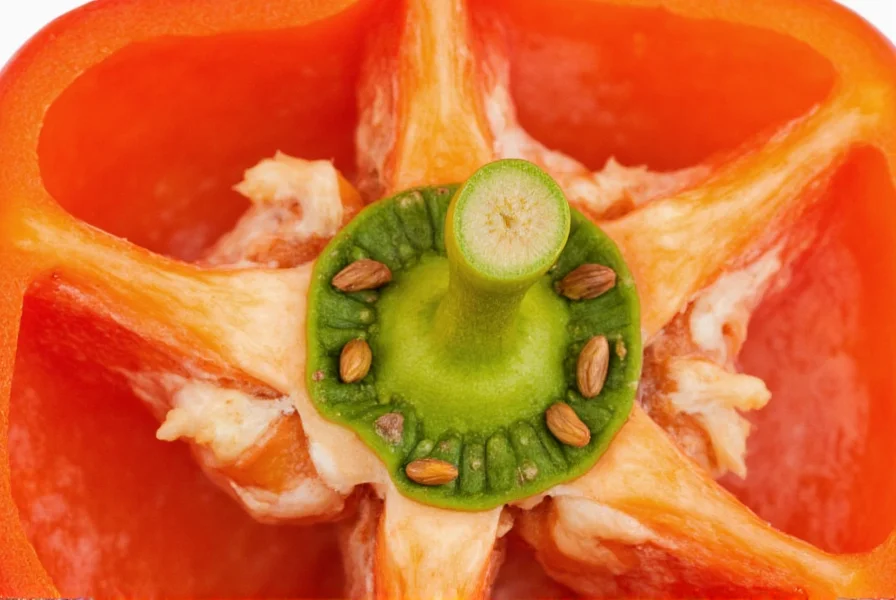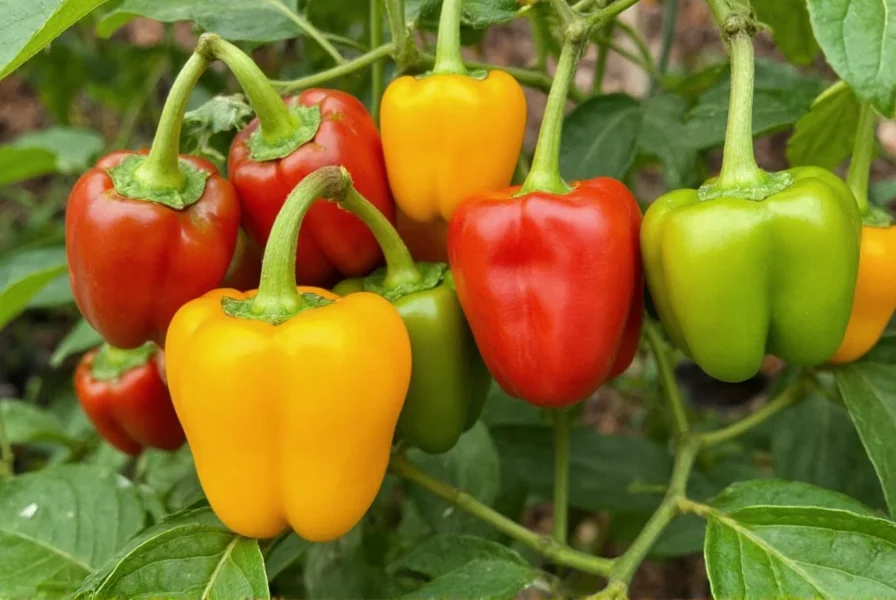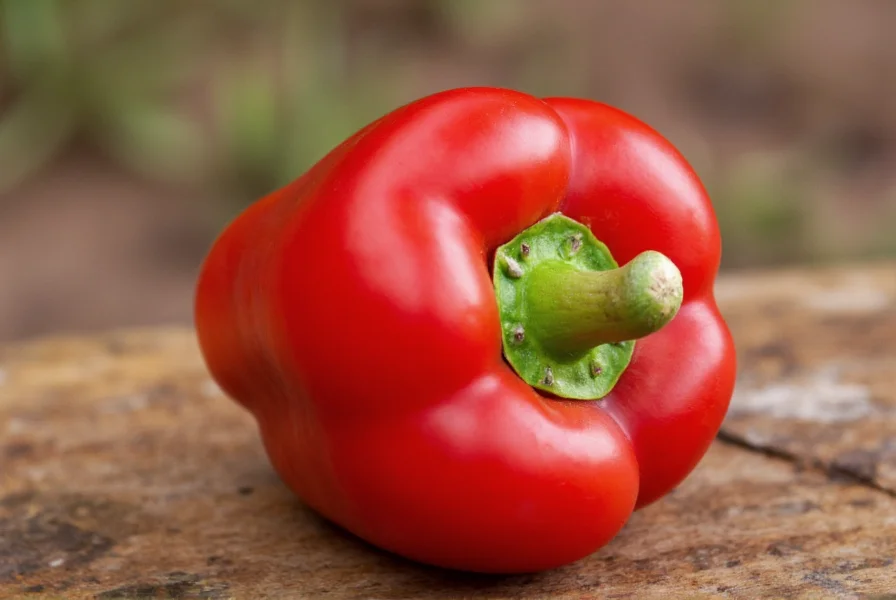Peppers are botanically classified as fruits because they develop from the flower of the plant and contain seeds. However, in culinary contexts, peppers are treated as vegetables due to their savory flavor profile and common usage in main dishes rather than desserts. This dual classification explains why there's widespread confusion about whether peppers are fruits or vegetables.
Understanding the distinction between peppers' botanical reality and culinary tradition helps clarify this common food classification puzzle. The confusion stems from the difference between scientific botany and everyday cooking practices—a gap that affects several other produce items as well.
Botanical Classification: Why Peppers Are Technically Fruits
From a botanical perspective, a fruit develops from the ovary of a flowering plant and contains seeds. Peppers perfectly fit this definition. When a pepper plant flowers, the ovary swells and matures into what we eat, with numerous seeds inside. This makes peppers true fruits, specifically classified as berries in botanical terms—a category that also includes tomatoes, eggplants, and cucumbers.

Culinary Tradition: Why We Treat Peppers as Vegetables
In the kitchen, classification follows flavor and usage rather than scientific accuracy. Chefs and home cooks categorize ingredients based on:
- Taste profile (sweet vs. savory)
- Typical meal placement (main course vs. dessert)
- Cultural cooking traditions
Peppers' low sugar content and savory applications place them firmly in the vegetable category for culinary purposes. You'll find bell peppers in stir-fries, stuffed peppers as main dishes, and jalapeños in salsas—all contexts where sweet fruits wouldn't typically appear.
Historical Context of the Pepper Classification
The confusion dates back to 1893 when the U.S. Supreme Court ruled in Nix v. Hedden that tomatoes should be classified as vegetables for tariff purposes, despite their botanical classification as fruits. This legal distinction influenced how other borderline produce items like peppers were perceived in everyday language.
Botanists maintain scientific accuracy while chefs prioritize practical usage—a divide that continues to cause confusion about is bell pepper a vegetable or fruit and similar classification questions.
Pepper Classification Compared to Other Produce
Peppers aren't alone in this botanical-culinary disconnect. Several common foods share this dual identity:
| Food Item | Botanical Classification | Culinary Classification |
|---|---|---|
| Peppers | Fruit (berry) | Vegetable |
| Tomatoes | Fruit (berry) | Vegetable |
| Cucumbers | Fruit (pepo) | Vegetable |
| Zucchini | Fruit (pepo) | Vegetable |
| Rhubarb | Vegetable (stalk) | Fruit (culinary) |
Practical Implications for Cooking and Nutrition
Understanding pepper classification matters for more than trivia—it affects how we use them in recipes and understand their nutritional profile:
- Nutrition labeling: Peppers are grouped with vegetables in dietary guidelines despite their botanical classification
- Cooking techniques: Their vegetable treatment means they're often cooked with other savory ingredients rather than sweet preparations
- Gardening practices: As fruiting plants, peppers require similar care to tomatoes and eggplants

Common Misconceptions About Pepper Classification
Several myths persist about why is pepper considered a vegetable:
- Myth: All fruits are sweet while all vegetables are savory
Reality: Many fruits like lemons and olives are not sweet, while some vegetables like sweet potatoes are quite sweet - Myth: The seed count determines fruit classification
Reality: Strawberries (fruits) have external seeds while rhubarb (vegetable) has internal seeds - Myth: Botanical classification should dictate culinary usage
Reality: Culinary traditions developed independently of scientific botany
Why This Distinction Matters Beyond Trivia
Understanding the difference between botanical and culinary classifications helps home cooks and professional chefs make better ingredient substitutions. When a recipe calls for "vegetables" in the culinary sense, knowing that peppers fit this category helps maintain flavor balance. Similarly, gardeners benefit from understanding peppers' botanical nature when planning crop rotations and companion planting.
The question of whether are chili peppers fruits reveals how language evolves differently in scientific versus everyday contexts—a fascinating intersection of biology, culture, and language that extends far beyond just peppers.
Is a bell pepper technically a fruit?
Yes, bell peppers are botanically classified as fruits because they develop from the flower of the plant and contain seeds. Specifically, they're categorized as berries in botanical terms, which might surprise many people who consider them vegetables in cooking.
Why do we call peppers vegetables if they're fruits?
Peppers are called vegetables in culinary contexts because of their savory flavor profile and how they're used in cooking. Unlike sweet fruits typically served in desserts, peppers are used in main dishes, salads, and savory preparations, which aligns with how we traditionally use vegetables.
What's the difference between botanical and culinary classification?
Botanical classification is based on plant biology (how the plant develops and reproduces), while culinary classification follows taste, usage, and cultural traditions. Botanists classify peppers as fruits because they contain seeds and develop from flowers, but chefs treat them as vegetables due to their savory applications in cooking.
Are all types of peppers classified the same way?
Yes, all pepper varieties—whether bell peppers, jalapeños, habaneros, or cayenne—are botanically fruits. The heat level or color doesn't change their fundamental botanical classification, though it may affect how they're used culinarily (spicy peppers often function as seasonings rather than main ingredients).
Does pepper classification affect nutrition?
No, the classification doesn't change peppers' nutritional content. Whether called fruits or vegetables, peppers remain excellent sources of vitamin C, vitamin A, and antioxidants. Nutritionally, they're grouped with vegetables in dietary guidelines regardless of their botanical classification.











 浙公网安备
33010002000092号
浙公网安备
33010002000092号 浙B2-20120091-4
浙B2-20120091-4